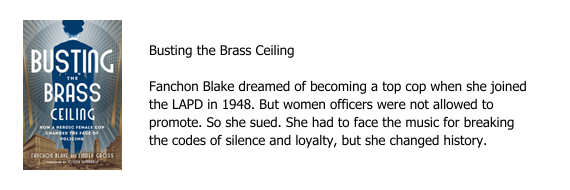A number of my clients writing novels have struggled with characters’ point of view (POV for short) in their work. POV means that you enter a character’s head and see the world from his or her point of view. The problem is that entering every character’s head including the minor ones can, well, make the reader’s head spin. On the other hand, sometimes it helps to have more than just the main character’s point of view. And, of course, there is often more than just a single main character in a novel. So, what do you do then?
I liked Rob Parnell‘s oldy-but-goddy article “Point of View in Fiction – What’s Right and What’s Wrong“. Here, with his permission, is his take on the issue:
The great Chinese ruler, Mao Tse Tung, once said, ‘In order to break the rules of a system, one must first learn and understand them.’ (Okay, I paraphrase – he was actually talking about Communism.)
But so it is with POV in fiction. Learn the rules first, then you can break them.
I get so many emails from writers asking how they should deal with point of view that I thought it might be interesting to discuss the subject here.
The truth is, there’s no right or wrong way to do things – but there are guidelines that, if you adhere to them, will mark you out as a good and competent writer. Similarly, if you ignore them (without understanding what you’re doing) then you’ll most likely come across as an amateur.
Before we go on, let’s make sure we know the terms of reference.
For most fiction, you have 4 basic alternatives.
1. First person, where everything is told from the limited POV of the protagonist – the classic ‘I’ story. Good because you can get right inside the feelings and motivations of the main character. Bad because only the narrator can propel the plot – that is, nothing can happen that the hero is unaware of.
2. Third person, where the writer (and reader) follows the action through the actions of one protagonist. Good because you can get inside and outside of the character, describing a rounded personality with some objectivity.
3. Omniscient, where the writer can describe the actions and inner feelings of all of the characters from any point of view that seems appropriate. Good because of its flexibility. Bad because it is open to abuse and mishandling.
4. A combination of all of the above.
Now, most aspiring writers have little trouble with options 1 and 2 – the limitations are relatively obvious when you use them. It’s in the 3rd option where writers start to flounder.
Consider this piece:
Jenny thought about what he’d said. He was right, she was lonely and would do anything to stop him from leaving. Finally, she said, “Do you care at all?”
“Of course.” Don looked away, trying to contain his angst. Should he tell her about Debra? He wanted to but knew it would only make things worse. He chose to lie. “We’ve grown apart, Jen…”
Gwen entered the room. Instantly, she could tell something was wrong. She scanned the lovers’ faces and decided to leave them to it. Head bowed, she left.
This is fairly typical of the kind of inexperienced writing I’m sometimes asked to comment on. The writer desperately wants the reader to know all sides of the story, thinking that this creates drama and intrigue – but simply put, it doesn’t. It creates confusion for the reader. What’s called ‘head-hopping’ makes a reader uneasy for one main reason:
Identification. Readers want to relate to one character at a time – it’s human nature. Therefore, it would be unnatural for a character to know what another was thinking. Indeed, it’s NOT knowing what the other character is thinking that goes a long way to creating drama!
The practice of ‘head hopping’ has all but been eradicated in most modern literature but is still prevalent in some romance, especially during love scenes. Sometimes the romance writer is so keen to let the reader know that love (or whatever) is being reciprocated that they abandon the line between two points of view and merrily leap from one brain to another, sometimes, I find, to the point of nausea!
Note this: just because something is or was common practice, doesn’t make it right. Writing is a craft and we, as craftspeople, should surely learn from the mistakes of the past and seek to improve our writing techniques.
Agatha Christie was famous for her head hopping – you might be in a room with Miss Marple and half a dozen others and never knows whose head you would end up in! This gave the reader the illusion they knew the innermost thoughts of characters. I say illusion because Christie did it to mislead – she was never totally honest with the reader – for good reason: she wanted to hold back the identity of the killer till the last page!
This kind of deliberate misdirection – the type that ‘cons’ the reader – is frowned upon nowadays. We modern writers have to be cleverer than that.
There’s a famous scene in Carrie, which Stephen King mentions in his book On Writing. Most of the book is told from Carrie’s POV but there’s one scene where Carrie leaves the room and the POV jumps, without a break, to her mother. King says he did this deliberately – to jolt the reader into accepting a particular plot point. This is a fine example of breaking the rules when you know them.
Despite the challenges for the aspiring writer, the modern trend is towards alternating chapters of third person omniscience and occasional forays into first person, not exclusively limited to the protagonist.
But why is the most challenging of styles now the norm?
One word: TV. Without so much as making a framed suggestion, television and movie scripts have forced us to think in terms of objective omniscience – a state where we are privy to the actions of most of the lead characters actions and reactions in real time. This works so well because it reflects the way we have come to view reality – a linear series of interactions that lead to a believable outcome.
It’s little wonder that most modern novelists concerned with ‘willing suspension of disbelief’ now use the same format – where each chapter introduces new characters whom we get to know and understand before moving on to another situation or group of individuals that we implicitly expect to have something to do with the plot.
But in the actual writing, where should we place the point of view? We should already understand that in any given scene we should identify with one character at a time – but which one? The best advice I ever received was that scenes are most effective when told from the POV of the person with most to lose.
For example, in a love scene, the partner with most at stake emotionally should be your focus. Similarly in a thriller, the hero who’s about to lose his life, his lover or his livelihood through his actions should be your focus.
In literary novels, your focus should be on the character most affected by the unfolding story. In fantasy and science fiction too, you’ll have noticed that the story is more often than not told from the POV of the hero charged with saving the world, the spaceship or the poor hapless villagers.
Follow this particular guideline and you won’t go far wrong.
Then, later, when you understand the power of placing the POV in the right place, can you feel free enough to experiment – by deliberately moving the focus around. Dickens was good at this. He would focus his attention (and thereby the readers’) on unsympathetic characters from time to time to heighten the effect of returning to the protagonist.
Modern authors too – like James Patterson and Thomas Harris – will occasionally tell parts of the story from the POV of the killer. To give us a sense of menace, madness and revulsion so that we identify more strongly with Clarice Starling and Alex Cross when we return to them.
To conclude – my advice is that you choose to write scenes, chapters, sections etc. from one POV at a time. And if you do feel the need to change POV midstream, have the courtesy to place a blank line in the text to alert the reader to the change!




















0 Comments